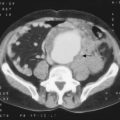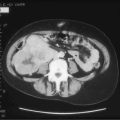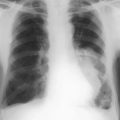CHAPTER 8 Head, neck and otorhinolaryngology
Scalp swellings
These include sebaceous cysts, lipomas, papillomas, squamous cell and basal cell carcinomas and melanoma (→ Ch. 19). Other swellings of the scalp include those described below.
Swellings in the neck
A convenient classification of these is: superficial, lymph nodes and deep swellings (→ Table 8.1).
| Superficial | Sebaceous cyst |
| Lipoma | |
| Dermoid cyst | |
| Abscess | |
| Lymph nodes | |
| Deep | |
| Anterior triangle | |
Superficial
Superficial lumps include sebaceous cysts, lipomas, dermoids and infective lesions, e.g. boils and abscesses. A common site for lipomas is in the midline posteriorly at the level of the collar line (→ Ch. 19).
Lymph nodes
The majority of swellings in the neck, especially in children, are likely to be lymph nodes. The lymph nodes of the head and neck are basically arranged in two circles; an outer superficial one including submental, submandibular, preauricular, and occipital nodes; and an inner one surrounding the trachea and oesophagus and including the paratracheal and retropharyngeal nodes. Both the superficial and deep groups drain into a chain of deep cervical lymph nodes that surround the internal jugular vein. Lymph from there drains into the thoracic duct on the left and into the right lymphatic duct. The causes of cervical lymphadenopathy are shown in Table 8.2.
| Infection | Local lesions on head and neck |
| Upper respiratory tract infection | |
| Tonsillitis | |
| Glandular fever | |
| Toxoplasmosis | |
| Tuberculosis | |
| HIV | |
| Cat-scratch disease | |
| Malignancy |
Deep swellings of the anterior triangle
Swellings that do not move on swallowing
Salivary glands: inflammatory
The parotid gland is included here, although only a part of the gland extends into the neck under normal conditions. In pathological conditions it may present with the swelling largely in the neck. The causes of swellings of the salivary glands are shown in Table 8.3.
| Inflammatory and infective | Acute sialadenitis, e.g. mumps parotitis |
| Chronic sialadenitis, e.g. calculus, duct stenosis | |
| Neoplastic |
Salivary glands: tumours
Benign: Pleomorphic adenoma
Differential diagnosis
Parotitis, sebaceous cyst, lipoma, preauricular lymph node, tumour of ramus of mandible.
Benign: Adenolymphoma (Warthin’s tumour)
This is a cystic tumour that contains epithelial and lymphoid elements. It is benign.
Branchial cyst
This is a remnant of the second branchial cleft. It may be associated with a sinus or fistula.
Deep swellings of the posterior triangle
Cervical rib
This may cause neurological or vascular symptoms in the arm (→ Ch. 15). It is often asymptomatic. Occasionally the rib is palpable.
Pharyngeal pouch
Oral disorders
Stomatitis
Stomatitis is a general term used to describe inflammation of the lining of part, or the whole, of the mouth (→ Table 8.4).
| Local | Ill-fitting dentures |
| Sharp teeth | |
| Smoking | |
| Local ulceration | |
| Infections, e.g. herpes simplex, candida, Vincent’s angina | |
| Trauma, e.g. chemical, thermal, irradiation | |
| General |
Symptoms of stomatitis
A sore dry mouth; mastication is painful. There may be painful cracking at the corners of the mouth.
Specific causes
Carcinoma of the upper aerodigestive tract
The oral cavity
Carcinoma of the tongue
Treatment
Squamous cell cancer of the pharynx and larynx
Neck dissection
Cervical nodal basin divided into levels I–VI (Sloan Kettering nomenclature):
Disorders of the ear
Otitis externa
Disorders of the nose
Nasal obstruction
Tumours
Lesions of the maxilla may require access via a Weber–Ferguson incision – an incision extending vertically along lip philtrum, along the ipsilateral nasal-cheek margin (lateral rhinotomy) and along the eyelid-cheek margin. Partial or total maxillectomy may be required for clear margins and the orbital floor can be reconstructed with calvarial bone grafts, and the cavity including the hard palate filled with a prosthetic obturator or free microvascular muscle transfer, e.g. rectus abdominis (→ Ch. 19).





